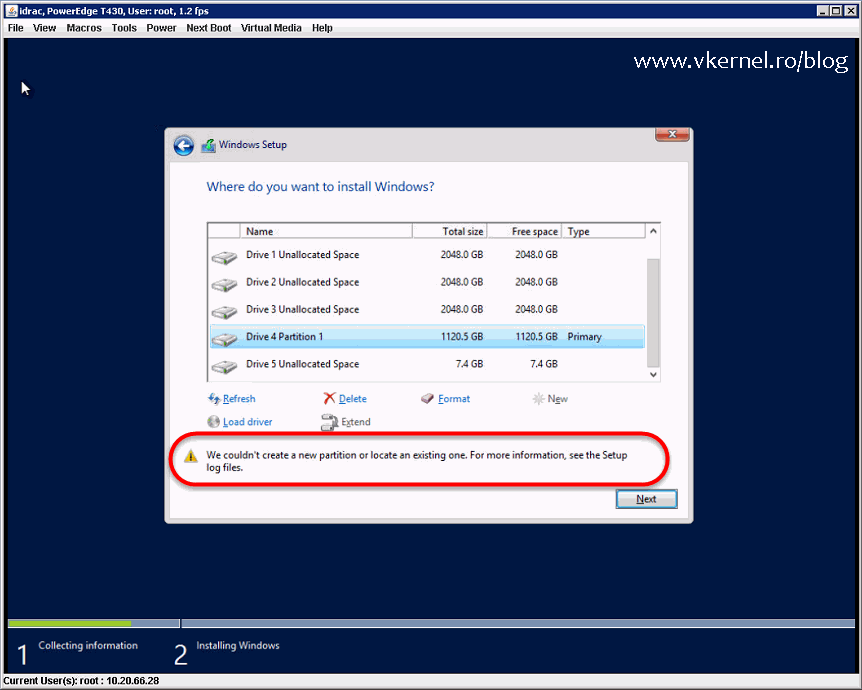

- Manually create boot partition server 2008 r2 install#
- Manually create boot partition server 2008 r2 update#
- Manually create boot partition server 2008 r2 software#
rdisk(x): The physical disk number to load Windows from.Since we’re using multi, keep this 0 as well. disk(0): The physical disk number to load Windows from if multi is not used.multi(0): The adapter of the hard disk that Windows is on.Each operating system has a line that describes its location in standard ARC path format. This section lists the operating systems installed on this physical machine. These include timeout which defines how long NTLDR will wait for the end user to select an OS, and default which tells NTLDR what OS to boot into if the timeout value runs out.

The section entitled contains the global NTLDR settings. Multi(0)disk(0)rdisk(1)partition(1)\WINDOWS="Windows Server 2003" /fastdetect Multi(0)disk(0)rdisk(0)partition(1)\WINDOWS="Windows XP Professional" /fastdetect A typical BOOT.INI file: ĭefault=multi(0)disk(0)rdisk(0)partition(1)\WINDOWS

LocationīOOT.INI is stored in the root of your “system” partition, which contains other files like NTLDR, NTDETECT, and a BOOT folder.
Manually create boot partition server 2008 r2 update#
If you’re getting a BOOT.INI-related error, then you need to create or update your BOOT.INI file to reflect the correct system information. NTLDR accesses this file to get a list of the installed operating systems and display them in the on-screen boot menu for the end user to pick and OS to load into.

SAS PCIe RAID Internal HBA (SGX-SAS6-R-INT-Z). Obtain the Microsoft Windows OS installation distribution media.Ĭreate a bootable virtual drive (with at least RAID 0) if your system has a Sun Storage 6 Gb On the disk, including any preinstalled OS. The OS installation formats the boot disk, which erases any existing data
Manually create boot partition server 2008 r2 install#
Install Windows Server 2012 R2 (Manually).Install Windows Server 2008 R2 (Manually).Install Windows (Oracle System Assistant).Oracle System Assistant OS Installation Task.Windows Deployment Services OS Installation.Supported OS Versions and Latest Information.
Manually create boot partition server 2008 r2 software#


 0 kommentar(er)
0 kommentar(er)
